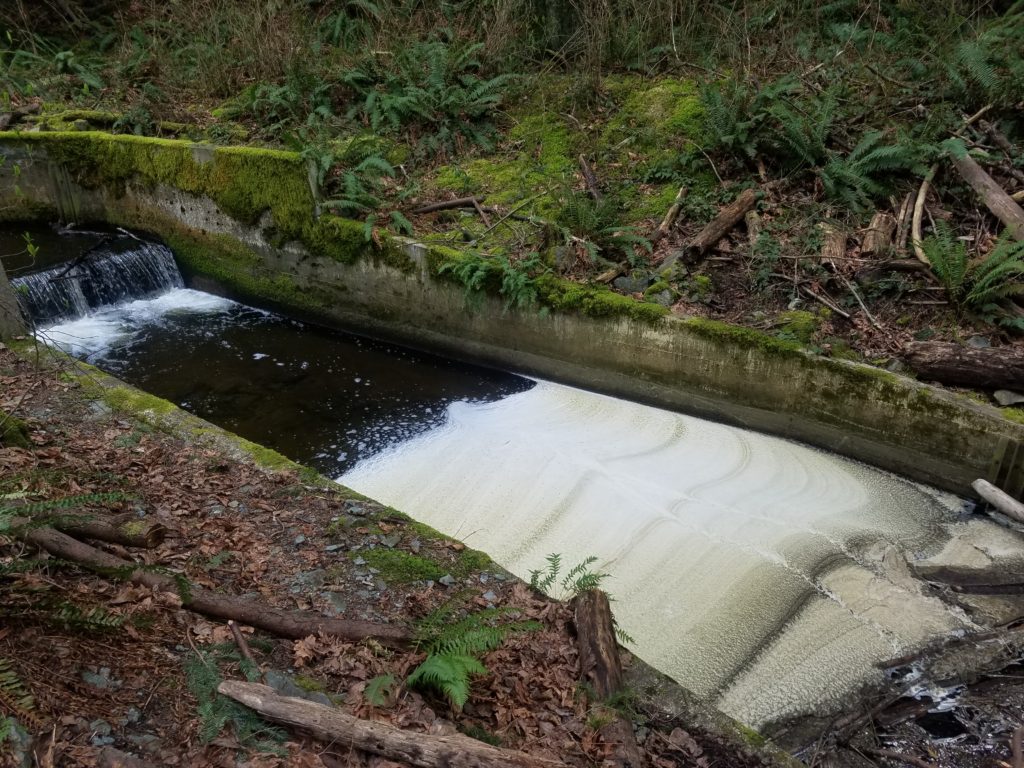Ah, Lake Padden Park, a treasured gathering place for Whatcom County recreationists, dogs, ducks and increasingly, cyanobacteria.
Nestled on the south side of Bellingham, Lake Padden Park is centered around a 220-acre lake that until the 1970s, served as the city’s primary source of drinking water. Today, Lake Padden is a recreational haven for those who enjoy hiking, golf, swimming, kayaking and it even has a large dog park. Unfortunately, the lake has been looking a little green lately. In early March residents reported blue-green waters running through Padden Creek. Despite what Facebook and Reddit conjecture would have you believe, it wasn’t a St. Patrick’s Day celebration – it was an algae bloom. While it is fairly normal to see algae blooms in the summer months, blooms in late February and early March are historically unusual.
When reports came in on March 7th, local officials from various different agencies and organizations, including our own pollution prevention specialist, Kirsten McDade, went out and collected samples of the unusual algae bloom. While no toxins were detected, it was concerning to see so early in the year.
Lake Padden Algae Blooms: What are Harmful Algae Blooms (HABs)?
Harmful algae blooms (or harmful algal blooms) are not actually algae at all. Cyanobacteria, also known as blue-green algae, is a form of bacteria that has similarities to plants. They are found all over the world in lakes, rivers, ponds and oceans. These blooms are created when warm waters have access to sunlight and ample amounts of fertilizer, such as runoff from lawns, golf courses and manure from livestock or even pets. Algae blooms usually occur in the warm summer months but due to climate change, warmer weather is starting earlier and staying longer.When the cyanobacteria die, decomposer bacteria consume them, which can suck the oxygen out of the water, causing “dead zones” where native plants and wildlife can no longer thrive.
Harmful algae blooms can come in a few “unfashionable” colors and styles. It can appear blue, green, brown, or even red and look like foam, scum, or mats. When it dies it can leave a very unpleasant smell, similar to rotting plants.

Is it safe to swim in Lake Padden?
Harmful algae blooms can produce toxins harmful for humans and dogs to ingest and can disrupt our seafood supply. When you see a toxic algae bloom, you and your dog should avoid swimming in the area regardless of whether you see signs marking the closure of the area to swimming. It is not uncommon for pets to become extremely sick or even die after consuming toxins from algae blooms. Blooms can grow and become toxic more quickly than local management agencies can get out to sample them and respond.
The cause of this Lake Padden algae bloom is still unclear but a full recreational assessment report is expected by this fall (2023) with recreational changes by summer of 2024.
What should you do when you see Harmful Algae Blooms?
If you are concerned about lake algae a good place to find out what is going on is nwtoxicalgae.org. There you can read about recent water testing and report an algae bloom in your area.
If you’re in Whatcom or Skagit county and you see a green sheen across a body of water you think might be an algae bloom, or for that matter any other water issues that look concerning (oil sheens, foams, odors, etc.), you can also email Kirsten McDade, or call our pollution hotline at: (360) 220-0556.
In addition, you can help us respond to pollution issues faster by downloading the WaterReporter app. This app lets you post photos of pollution concerns along with your location. Along with other community members, you can help crowdsource pollution issues so we and local agencies can investigate and find solutions.
